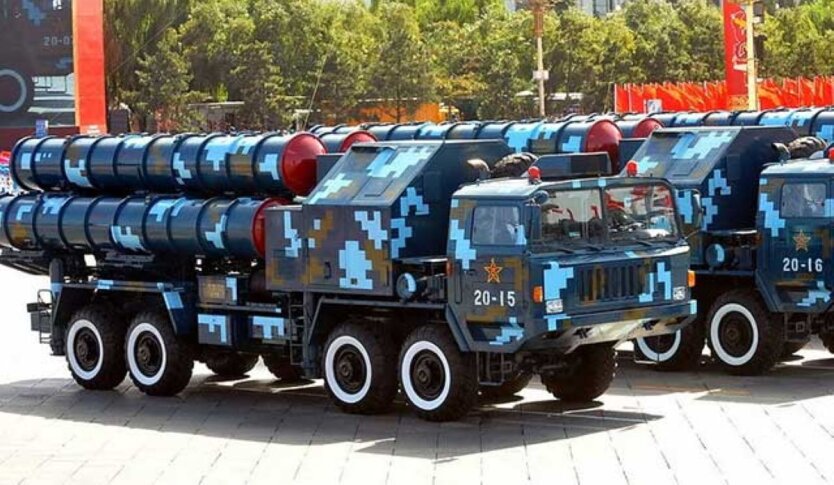Pakistan is arming itself with Chinese air defense systems to counter India.


Pakistan has integrated advanced Chinese air defense systems into its arsenal. This includes the FD-2000, HQ-16FE, and HQ-9BE. This move, announced in early 2025, highlights the growing closeness between the Pakistani and Chinese militaries, as well as a strategic response to regional tensions, particularly with India.
The deployment of these sophisticated missile systems demonstrates Pakistan's ambition to modernize its air defense capabilities. It could alter the balance of power in the unstable region, reports Bulgarian Military.
The FD-2000, developed by the China Precision Machinery Import-Export Corporation, is a long-range surface-to-air missile system. It can track and engage multiple targets simultaneously thanks to advanced radar and navigation systems.
HQ-16FE complements the FD-2000. This system has a range of up to 160 kilometers and can engage targets the size of a fighter jet or cruise missile.
HQ-9BE extends Pakistan's reach even further, capable of engaging aircraft at a distance of up to 260 kilometers and tactical ballistic missiles at a distance of up to 25 kilometers.
Pakistan's pursuit of advanced air defense systems stems from decades of rivalry with India, characterized by conflicts and an arms race. For Pakistan, having a reliable defensive factor against India's stronger and better-funded military is crucial.
The acquisition of Chinese systems, such as the FD-2000 (the export version of the HQ-9), suggests Pakistan's reliance on Eastern technologies and is aimed at enhancing cooperation with China. This partnership has been developing since the 1980s.
The deployment of these systems has significant implications for South Asian security. India, utilizing Russian, Israeli, and indigenous air defense systems, is concerned about Pakistan's growing capabilities.
With features like a range of 380 kilometers and the ability to track 80 targets, the S-400 provides India with a significant advantage. However, the combination of the FD-2000, HQ-16FE, and HQ-9BE narrows this advantage.
China's role as a defense supplier has global ramifications. The success of the HQ-9 system, including the FD-2000, in Pakistan could strengthen China's position in the global arms market, where it competes with the United States and Russia.
The airstrike in Balakot in 2019 revealed vulnerabilities in Pakistan's air defense system. This likely stimulated the current modernization efforts.
However, operational challenges may limit Pakistan's ambitions. Integrating the FD-2000, HQ-16FE, and HQ-9BE into a unified network requires complex management infrastructure and skilled personnel.
Logistical barriers, such as the supply of spare parts and maintenance of complex radars, could create financial difficulties for Pakistan.
The effectiveness of these systems will depend on Pakistan's ability to integrate them into its defense network. This task is complicated by technical and financial constraints.
FD-2000 and its counterparts may help Pakistan ensure greater resilience against aerial threats. But success depends on overcoming challenges and managing geopolitical consequences.
Analysis of the Written Material:
The article discusses how Pakistan has integrated advanced Chinese air defense systems into its arsenal. This move reflects the growing closeness between the Pakistani and Chinese militaries and is aimed at providing a strategic response to regional tensions. The article also notes that this deployment has significant implications for South Asian security and places India on alert.
The article details various air defense systems included in Pakistan's arsenal, such as the FD-2000, HQ-16FE, and HQ-9BE. It also mentions that these systems are part of Pakistan's strategic response to threats from India. The article highlights that the acquisition of Chinese systems indicates China's rising influence in the global arms market.
Additionally, the article addresses potential issues that may arise during the integration of these systems into Pakistan's air defense network, such as the complex management infrastructure and logistical hurdles. It also states that the success of these systems depends on Pakistan's ability to overcome technical and financial constraints.
Overall, the article provides important information about the integration of Chinese air defense systems into Pakistan's arsenal. It emphasizes the geopolitical implications of this deployment and the challenges that may arise during the integration process.
Read also
- Pensions do not cover even utilities and transportation: how much do Ukrainians really receive
- NBC learned who Trump consults regarding Iran
- The situation is complex: the minister of energy addressed Ukrainians with an important statement
- 'Not planning to lose': Putin's aides speak of advantage in the war against Ukraine
- State Employment Service: 70% of IDPs Find Work
- In Ukraine, the only condition for refusing NATO has been named










